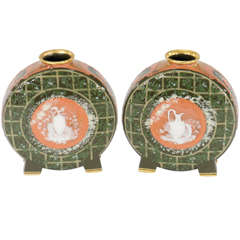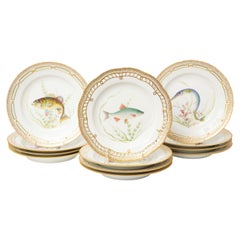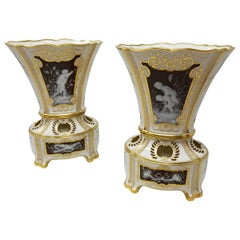Albion Birks
Antique 19th Century British Aesthetic Movement Vases
People Also Browsed
Vintage 1970s Danish Dinner Plates
Gold, Enamel
Vintage 1960s German Rococo Dinner Plates
Gold
Vintage 1980s English Neoclassical Porcelain
Porcelain
Antique 19th Century French Louis XVI Commodes and Chests of Drawers
Marble, Ormolu
Antique 19th Century French Napoleon III Centerpieces
Ormolu
Antique 1880s English Neoclassical Pottery
Pottery
Antique 19th Century French Louis XV Secretaires
Carrara Marble, Bronze
Antique 19th Century English Early Victorian Sofas
Leather
Antique 19th Century French Louis XVI Commodes and Chests of Drawers
Breccia Marble, Bronze, Ormolu
Vintage 1910s European Edwardian Figurative Sculptures
Bronze
Antique Early 1900s German Rococo Porcelain
Porcelain
Antique Late 19th Century French Louis XV Cabinets
Marble, Bronze
20th Century English Victorian Living Room Sets
Upholstery, Beech, Walnut
Antique 1880s French Cabinets
Breccia Marble, Bronze, Ormolu
Antique Late 19th Century Austrian Classical Roman Dinner Plates
Porcelain
Antique Late 19th Century English Louis XIV Commodes and Chests of Drawers
Bronze, Brass, Ormolu
Recent Sales
Vintage 1920s English Neoclassical Porcelain
Gold Leaf
Antique 19th Century English Neoclassical Vases
Porcelain
Antique 1890s English Neoclassical Porcelain
Gold
Vintage 1920s English Neoclassical Porcelain
Gold Leaf
Minton for sale on 1stDibs
Pottery is one of the oldest decorative art forms, and Minton is one of its historical masters. For more than 250 years, the English company was a premier producer of porcelain and ceramic wares. Its factory was known for detailed and brightly colored Victorian tableware, including dinner plates and serving pieces.
Thomas Minton founded the Minton factory in 1793 in Stoke-upon-Trent, England. It initially made earthenware but introduced bone china in 1798. When Minton died in 1836, the company passed to his son, Herbert Minton. The younger Minton was a savvy businessman with an eye for design. He introduced glossy majolica earthenware to the factory’s repertoire and hired skilled artists and designers like Augustus Welby Northmore Pugin and Albert-Ernest Carrier-Belleuse, boosting the company’s reputation.
In 1851, Minton debuted its majolica at the Great Exhibition in London. It became a royal family favorite and was even used to tile the Royal Dairy at Windsor Home Park. Minton majolica was also displayed on the monumental Saint George and the dragon fountain at the 1862 London International Exhibition.
Colin Minton Campbell, a nephew of Herbert Minton, took over the family business in 1858. He led the company to the head of the 1870s English art pottery movement. In the 1890s, French porcelain artist Marc-Louis Solon helped modernize Minton with his Art Nouveau designs.
Minton ceased operating as an independent company when it merged with Royal Doulton Tableware Ltd. in 1968. It was the end of an era, but not the end of widespread appreciation for Minton ceramics.
In 1982, the ”English Majolica” exhibition at the Cooper Hewitt, Smithsonian Design Museum featured 75 Minton pieces. When the Metropolitan Museum of Art reopened its British Galleries in 2020, it included a display of three colorful Minton majolica bird sculptures. Minton pottery was also on display from September 2021 to January 2022, along with other English pottery, at the Bard Graduate Center’s ”Majolica Mania” exhibition.
On 1stDibs, find exquisite Minton serveware, decorative objects, wall decorations and more.
A Close Look at neoclassical Furniture
Neoclassical design emerged in Europe in the 1750s, as the Age of Enlightenment reached full flower. Neoclassical furniture took its cues from the styles of ancient Rome and Athens: symmetrical, ordered, dignified forms with such details as tapered and fluted chair and table legs, backrest finials and scrolled arms.
Over a period of some 20 years, first in France and later in Britain, neoclassical design — also known as Louis XVI, or Louis Seize — would supersede the lithe and curvaceous Rococo or Louis XV style.
The first half of the 18th century had seen a rebirth of interest in classical antiquity. The "Grand Tour" of Europe, codified as a part of the proper education of a patrician gentleman, included an extended visit to Rome. Some ventured further, to sketch the ruins of ancient Greece. These drawings and others — particularly those derived from the surprising and rich archaeological discoveries in the 1730s and ’40s at the sites of the Roman cities of Pompeii and Herculaneum — caused great excitement among intellectuals and aesthetes alike.
Neoclassical furniture is meant to reflect both grace and power. The overall appearance of neoclassical chairs, tables and cabinetry is strong and rectilinear. These pieces are, in effect, classical architecture in miniature: chair and table legs are shaped like columns; cabinets are constructed with elements that mirror friezes and pediments.
Yet neoclassicism is enlivened by gilt and silver leaf, marquetry, and carved and applied ornamental motifs based on Greek and Roman sculpture: acanthus leaves, garlands, laurel wreaths, sheaves of arrow, medallions and chair splats are carved in the shapes of lyres and urns. Ormolu — or elaborate bronze gilding — was essential to French design in the 18th and 19th centuries as a cornerstone of the neoclassical and Empire styles.
As you can see from the furniture on these pages, there is a bit of whimsy in such stately pieces — a touch of lightness that will always keep neoclassicism fresh.
Find antique neoclassical furniture today on 1stDibs.
Finding the Right porcelain for You
Today you’re likely to bring out your antique and vintage porcelain in order to dress up your dining table for a special meal.
Porcelain, a durable and nonporous kind of pottery made from clay and stone, was first made in China and spread across the world owing to the trade routes to the Far East established by Dutch and Portuguese merchants. Given its origin, English speakers called porcelain “fine china,” an expression you still might hear today. "Fine" indeed — for over a thousand years, it has been a highly sought-after material.
Meissen Porcelain, one of the first factories to create real porcelain outside Asia, popularized figurine centerpieces during the 18th century in Germany, while works by Capodimonte, a porcelain factory in Italy, are synonymous with flowers and notoriously hard to come by. Modern porcelain houses such as Maison Fragile of Limoges, France — long a hub of private porcelain manufacturing — keep the city’s long tradition alive while collaborating with venturesome contemporary artists such as illustrator Jean-Michel Tixier.
Porcelain is not totally clumsy-guest-proof, but it is surprisingly durable and easy to clean. Its low permeability and hardness have rendered porcelain wares a staple in kitchens and dining rooms as well as a common material for bathroom sinks and dental veneers. While it is tempting to store your porcelain behind closed glass cabinet doors and reserve it only for display, your porcelain dinner plates and serving platters can safely weather the “dangers” of the dining room and be used during meals.
Add different textures and colors to your table with dinner plates and pitchers of ceramic and silver or a porcelain lidded tureen, a serving dish with side handles that is often used for soups. Although porcelain and ceramic are both made in a kiln, porcelain is made with more refined clay and is stronger than ceramic because it is denser.
On 1stDibs, browse an expansive collection of antique and vintage porcelain made in a variety of styles, including Regency, Scandinavian modern and other examples produced during the mid-century era, plus Rococo, which found its inspiration in nature and saw potters crafting animal figurines and integrating organic motifs such as floral patterns in their work.




